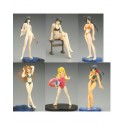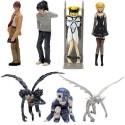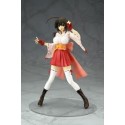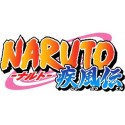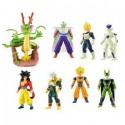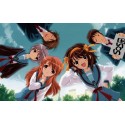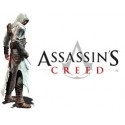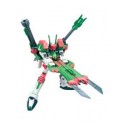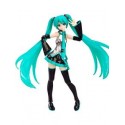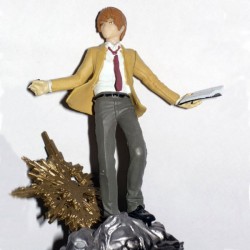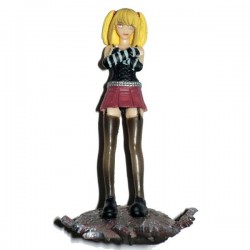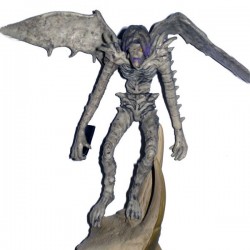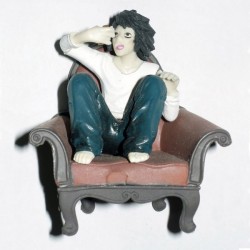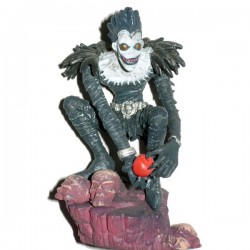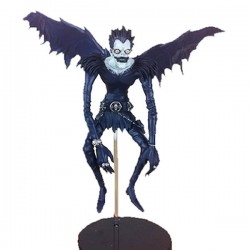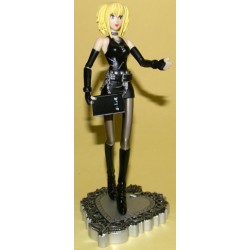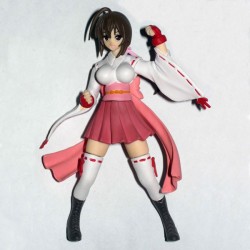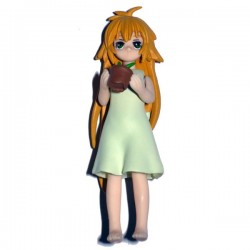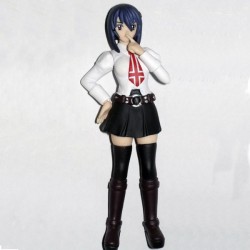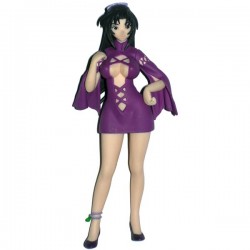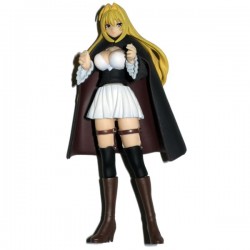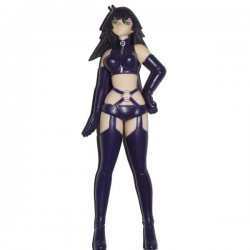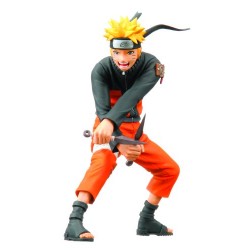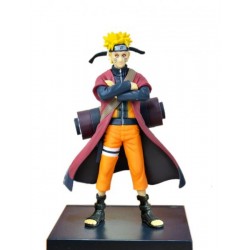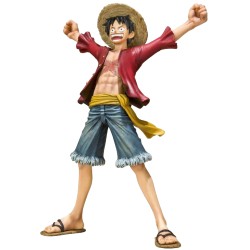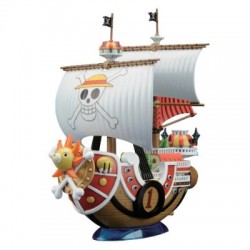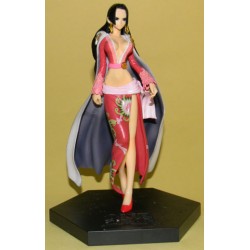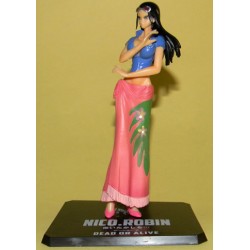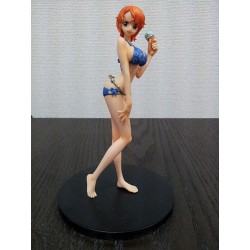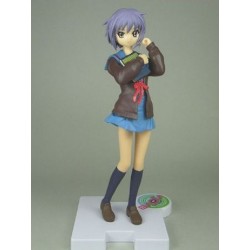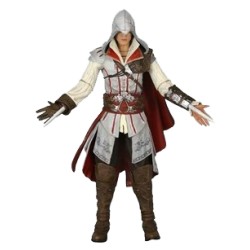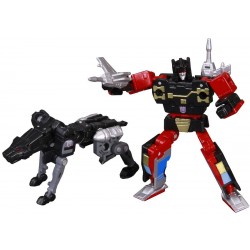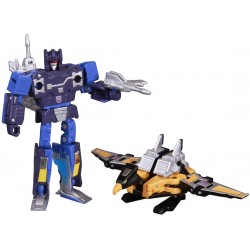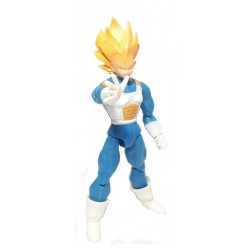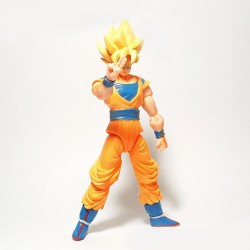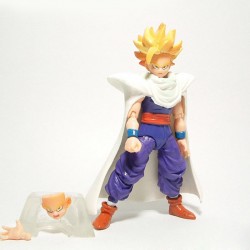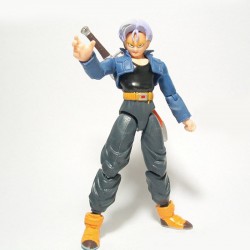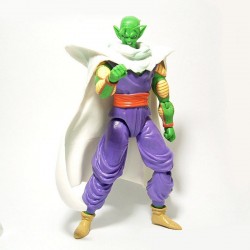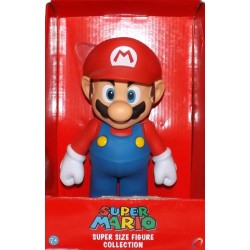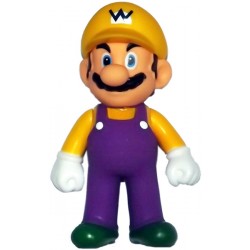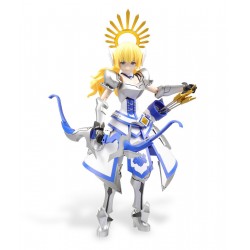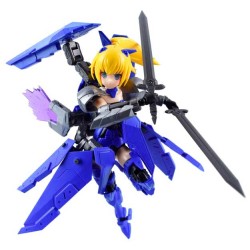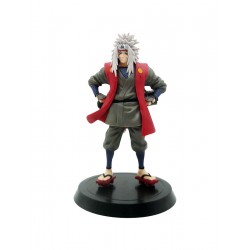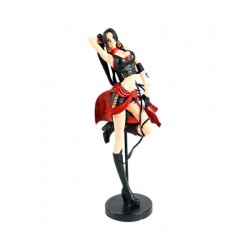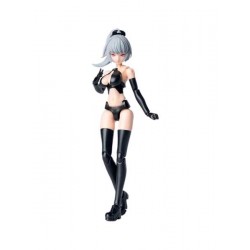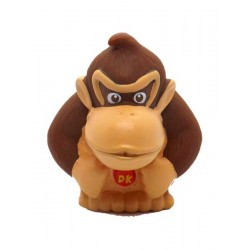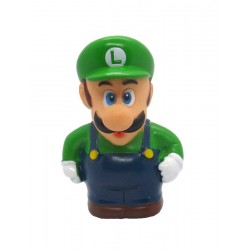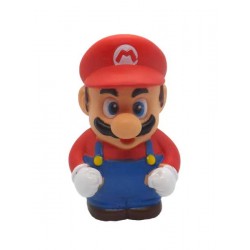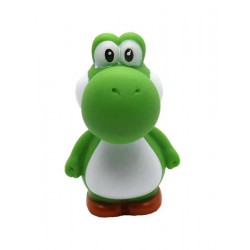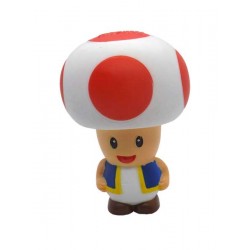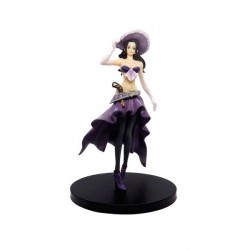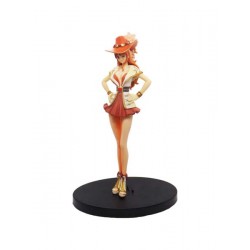No products
Prices are tax included
Action Figures
300 East, 25 North Traffic Lights Palí Novacentro, Guadalupe, Goicoechea, San Jose, Costa Rica
Here you will find a variety of Action Figures of your favorite series
Action Figures There are 71 products.
Subcategories
-
Love Hina
Here you will find different figures in the series Love Hina
Love Hina (Japanese: ラブ ひな Hepburn: Rabu Hina) is a Japanese manga series written and illustrated by Ken Akamatsu. It was serialized in Weekly Shōnen Magazine from October 21, 1998 to October 31, 2001, with the chapters collected into 14 tankōbon volumes by Kodansha. The series tells the story of Keitaro Urashima and his attempts to find the girl with whom he made a childhood promise to enter Tokyo University. The manga was licensed for an English language release in North America and the United Kingdom by Tokyopop, in Australia by Madman Entertainment, in Poland by Waneko and in Singapore by Chuang Yi. Two novelizations of Love Hina, written by two anime series screenwriters, were also released in Japan by Kodansha. Both novels were later released in North America and the United Kingdom by Tokyopop.
A twenty-four episode anime adaptation of the manga series, produced by Xebec, aired in Japan from April 19, 2000, to September 27, 2000. It was followed by a bonus DVD episode, Christmas and Spring television specials, and a three episode original video animation (OVA) entitled Love Hina Again. The anime series, special, and OVA were licensed for release in North America by Bandai Entertainment. In July 2007, the license was acquired by Funimation, who released a boxset of the television series in February 2009. The series is also licensed in Australia by Madman Entertainment and in the United Kingdom by MVM Films.
The series has proved extremely popular around the world, both commercially and critically. In Japan, the manga sold over 16 million copies; over 1 million anime DVDs were also sold. The English release of the manga has been reprinted many times. Both anime and manga have received numerous industry awards in Japan and North America, as well as praise from critics.
Plot:
The story is a shōnen comedy that takes place in the Kanagawa Prefecture, and centers on Keitaro Urashima and his attempts to fulfill a childhood promise that he made with a girl to enter Tokyo University together. However, he has forgotten the name of the girl he made the promise to and hopes to be accepted into Tokyo University in order to find her. Having failed the entrance exam twice and with his parents no longer willing to support him, he goes to stay at his grandmother's hotel, only to find that it has been converted into a female-only apartment. The tenants are about to kick him out when his aunt appears and announces that his grandmother has given him the title to the apartments. Much to their dismay Keitaro becomes the new manager of the family-owned girls' dorm Hinata House (日向荘 Hinata Sō, also known as Hinata Apartments) and must now balance his new responsibilities in addition to studying for the university entrance exam.
At Hinata House, Keitaro meets Naru Narusegawa, who is also studying to enter Tokyo University. Naru ranks first in the whole of Japan on the practice exams, and Keitaro convinces her to help him study. As the two of them grow closer through their studies, and after Keitaro accidentally reads a small section of Naru's diary, he becomes increasingly convinced that Naru may be the girl with whom he made the promise. On the second day of the Tokyo University exam, Keitaro asks Naru about the promise and is stunned when she tells him he is mistaken. Despite their studying, and Naru's mock exam results, they both fail the exams. The pair then have an argument and independently run off to Kyoto to clear their heads. While on their trip they settle their differences and meet Mutsumi Otohime, who lives in Okinawa and is also studying for the Tokyo University exams.
After returning from Kyoto, Keitaro and Naru decide to retake the exams. After a while, Mutsumi moves to Tokyo, and the three begin to study together. During this period, Naru becomes convinced that Mutsumi is Keitaro's promised girl, but Mutsumi states that she made a childhood promise with Naru, not Keitaro. During the next round of Tokyo University exams, Keitaro believes he has failed them once again and runs away before finding out his results. After learning of this, Naru chases after him without checking her exam results either, and they are followed by the rest of the residents of Hinata House who announce that Keitaro and Naru both passed the exams along with Mutsumi. Unfortunately for him, Keitaro has an accident at the Tokyo University opening ceremony and is unable to attend classes for three months. After recovering from his injuries, Keitaro decides to study overseas with Noriyasu Seta. As Keitaro is about to leave, Naru finally confesses her feelings to him at the airport and decides to wait for him to return.
When Keitaro returns, he and Naru finally begin to express their feelings for each other. After they deal with new obstacles, Grandma Hina returns to Hinata House and reveals Naru is the girl of Keitaro's promise. Four years later, a wedding ceremony (with a new girl, Ema Maeda presented) is held at Hinata House for Naru and Keitaro as they finally fulfill their childhood promise to each other.
-
Death Note
Here you will find different figures in the Death Note series
Death Note (デスノート Desu Nōto) is a Japanese manga series created by writer Tsugumi Ohba and manga artist Takeshi Obata. It centers on Light Yagami, a high school student who discovers a supernatural notebook, the titular "Death Note". This notebook grants its user the ability to kill anyone whose name and face they know. The series follows Light's subsequent efforts to create a criminal-free utopia using the notebook, and the efforts of a detective known as L to stop him.
Death Note was first serialized in 108 chapters by Shueisha in the Japanese manga magazine Weekly Shōnen Jump from December 2003 to May 2006. The series was also published in tankōbon format in Japan starting in May 2004 and ending in October 2006 with a total of twelve volumes. The anime series aired in Japan from October 3, 2006, to June 26, 2007. Composed of 37 episodes, the anime was developed by Madhouse and directed by Tetsuro Araki. A light novel based on the series, written by Nisio Isin, was released in Japan. Additionally, various video games have been published by Konami for Nintendo DS. The series was adapted into live-action films released in Japan on June 17, 2006, November 3, 2006, and February 2, 2008.
Viz Media licensed the Death Note manga in North America and has published all the twelve volumes from the series, a 13th volume which serves as a "reader's guide", as well as the light novels. The episodes from the anime first appeared in North America as downloadable by IGN. Viz later licensed the anime series and it aired on Bionix in Canada and on Cartoon Network in the United States, and was released on DVD in North America. The live-action films briefly played in certain North American theaters since 2008. However, none of the video games have thus far been published in North America or Europe.
Death Note is one of Weekly Shōnen Jump's best-selling manga series of all time, with sales over 26.5 million copies.
-
Sekirei
Here you will find different figures in the series Sekirei Sekirei (セキレイ, lit. Wagtail) is a Japanese manga series by Sakurako Gokurakuin. The manga began serialization in the seinen magazine Young Gangan published by Square Enix in December 2004. An anime adaptation produced by Seven Arcs and directed by Keizō Kusakawa aired in Japan between July and September 2008, and a second season aired between July and September 2010. Both seasons are licensed in North America by Funimation Entertainment. The central character of the series is Minato Sahashi, a ronin who failed college examinations twice. His life changes, however, when he meets a girl named Musubi.
-
One Piece
Here you will find different figures in the One Piece serieOne Piece (ワンピースWan Pisu) Is a Japanese manga created by Eiichiro Oda and carried by Konosuke Uda anime version. First published in Weekly Shōnen Jump on August 4, 1997, Shueisha published chapters in volumes, the first published on December 24, 1999 and published on 72 October 2013. The series tells the story of a young man named Monkey D. Luffy , inspired by his friend the pirate Shanks, begins a journey to achieve his dream of being the "Pirate King", for which it must find the One Piece treasure left by the previous Pirate King Gol D. Roger .
The magazine Shonen Jump published by Shueisha manga published since 1997 and carries a total of 723 chapters collected in 68 volumes. Moreover, Toei Animation makes the anime and transmitted in Fuji TV since August 1999 counting 623 episodes to date. Larp editors responsible for its publication in Argentina, Dark Horse is responsible for the publication in Spain and Mexico was published by Editorial Toukan.
One Piece is the best-selling manga in the history of Shonen Jump magazine with over 300 million copies sell and was the best-selling manga in 2007, 2008, 2009, 2010, 2011 and 2012. In the survey conducted by the Agency of Japanese Culture on the top fifty anime and manga One Piece in Japan peaked at 1. The anime has also received other awards. In the ranking published by 2005 on TV Asahi 's Top 100 anime of all time , based on an online survey in Japan, One Piece peaked at 6.4 is the eighteenth longest anime so far. -
Naruto
Here you will find different Naruto Action Figures Series
Naruto (ナルト) is an ongoing Japanese manga series written and illustrated by Masashi Kishimoto. The plot tells the story of Naruto Uzumaki, an adolescent ninja who constantly searches for recognition and dreams to become the Hokage, the ninja in his village who is acknowledged as the leader and the strongest of all. The series is based on a one-shot comic by Kishimoto that was published in the August 1997 issue of Akamaru Jump.
The manga was first published by Shueisha in 1999 in the 43rd issue of Japan's Weekly Shōnen Jump magazine. Currently, the manga is still being serialized; sixty-three tankōbon volumes have been released so far. The manga was later adapted into an anime, which was produced by Studio Pierrot and Aniplex. It premiered across Japan on the terrestrial TV Tokyo and other TX Network stations on October 3, 2002. The first series lasted 220 episodes, while Naruto: Shippuden, a sequel to the original series, has been airing since February 15, 2007. In addition to the anime series, Studio Pierrot has developed eight movies for the series and several original video animations (OVAs). Other types of merchandise include light novels, video games and trading cards developed by several companies.
Viz Media has licensed the manga and anime for North American production. Viz has been publishing the series in their Shonen Jump magazine, and as well as the individual volumes. The anime series began airing in the United States and Canada in 2005, and later in the United Kingdom and Australia in 2006 and 2007, respectively. The films, as well as most OVAs from the series, have also been released by Viz, with the first film premiering in cinemas. The first DVD volume of Naruto: Shippuden was released by Viz in North America on September 29, 2009, and it started broadcast on Disney XD in October of the same year. Viz Media will begin streaming both series on their upcoming streaming service Neon Alley this fall. Naruto Shippuden will air on Adult Swim's Toonami block January 2014.
Naruto is one of the best-selling manga series of all time having sold more than 126.5 million copies in Japan alone. Serialized in Viz's Shonen Jump magazine, Naruto has become one of the company's best-selling manga series. The English adaptation of the series has also appeared in the USA Today Booklist several times and volume 7 won the Quill Award in 2006. Reviewers from the series have praised the balance between fighting and comedy scenes, as well as the characters' personalities, but have criticized it for using standard shōnen plot elements.
-
Dragon Ball
Here you will find different brands, sizes and types of Action Figures Dragon Ball Series
Dragon Ball (ドラゴンボール Doragon Bōru) is a Japanese manga series written and illustrated by Akira Toriyama. It was originally serialized in Weekly Shōnen Jump from 1984 to 1995, with the 519 individual chapters published into 42 tankōbon volumes by Shueisha. Dragon Ball was initially inspired by the classical Chinese novel Journey to the West. The series follows the adventures of the protagonist, Goku, from his childhood through adulthood as he trains in martial arts and explores the world in search of the seven orbs known as the Dragon Balls, which summon a wish-granting dragon when gathered. Along his journey, Goku makes several friends and battles a wide variety of villains, many of whom also seek the Dragon Balls.
The 42 tankōbon have been adapted into two anime series produced by Toei Animation: Dragon Ball and Dragon Ball Z, which together were broadcast in Japan from 1986 to 1996. Additionally, Toei has developed eighteen animated feature films and three television specials, as well as an anime sequel titled Dragon Ball GT, which takes place after the events of the manga. From 2009 to 2011, Toei broadcast a revised, faster-paced version of Dragon Ball Z under the title Dragon Ball Kai, in which most of the original version's footage not featured in the manga was removed. Several companies have developed various types of merchandising based on the series leading to a large media franchise that includes films, both animated and live-action, collectible trading card games, numerous action figures, along with several collections of soundtracks and a large number of video games.
The manga series was licensed for an English-language release in North America by Viz Media, in the United Kingdom by Gollancz Manga, and Australia and New Zealand by Madman Entertainment. The entire anime series was licensed by Funimation Entertainment for an English-language release in the United States, although the series has not always been dubbed by the same studio. There have been many films of the franchise including the first live-action film adaptation being produced in 1989 in Taiwan. In 2002, 20th Century Fox acquired the rights to produce an American-made live-action film titled Dragonball Evolution that received a negative reception from critics and fans; the movie was released on April 10, 2009 in the United States.
Since its release, Dragon Ball has become one of the most successful manga and anime series of all time. The manga's 42 volumes have sold over 156 million copies in Japan and more than 230 million copies worldwide, making it the second best-selling series in manga history. Reviewers have praised the art, characterization, and humor of the story. It is widely regarded as one of the greatest manga series ever made, with many manga artists such as Eiichiro Oda (One Piece), Masashi Kishimoto (Naruto), Tite Kubo (Bleach), Hiro Mashima (Rave Master, Fairy Tail), Makoto Raiku (Zatch Bell) and Yoshio Sawai (Bobobo-bo Bo-bobo) citing Dragon Ball as a source of inspiration for their own now popular works. The anime, particularly Dragon Ball Z, is also highly popular in various countries and was arguably one of the most influential in boosting the popularity of Japanese animation in Western culture. -
Suzumiya Haruhi no Yūutsu
Suzumiya Haruhi no Yūutsu
Haruhi Suzumiya (涼宮ハルヒ Suzumiya Haruhi) is the general name for a series of light novels written by Nagaru Tanigawa and illustrated by Noizi Ito and which were adapted into other media. Initially released in Japan in 2003 with the novel The Melancholy of Haruhi Suzumiya, it was followed by ten additional volumes, an anime television series adaptation, four separate manga series, an animated film, two original net animation series and several video games.
After the anime adaptation airing in 2006, publishing company Kadokawa Shoten received various offers for licensing both the novels and their various adaptations. The novels are licensed for English language release in the United States by Little, Brown and Company, for young readers by Yen Press and the anime adaptation was licensed for North American distribution by Kadokawa Pictures USA division which then sublicensed production and distribution to Bandai Entertainment. -
Transformers
Here you will find different Sizes, Models and Generations of Action Figures Transformers Series
Transformers (トランスフォーマー Toransufōmā) is an entertainment franchise produced by American Hasbro and Japanese Takara Tomy toy companies. Initially a line of transforming toys rebranded from Takara's Diaclone and Microman toylines, the franchise began in 1984 with the Transformers toy line, and centers on factions of transforming alien robots (often the Autobots and the Decepticons) in an endless struggle for dominance or eventual peace. In its decades-long history, the franchise has expanded to encompass comic books, animation, video games and films.
The term "Generation 1" covers both the animated television series The Transformers and the comic book series of the same name, which are further divided into Japanese and British spin-offs, respectively. Sequels followed, such as the Generation 2 comic book and Beast Wars TV series, which became its own mini-universe. Generation 1 characters underwent two reboots with Dreamwave in 2001 and IDW Publishing in 2005, also as a remastered series. There have been other incarnations of the story based on different toy lines during and after the 20th-Century. The first was the Robots in Disguise series, followed by three shows (Armada, Energon, and Cybertron) that constitute a single universe called the "Unicron Trilogy". A live-action film was also released in 2007, with a sequel in 2009, a second sequel in 2011, and a third in 2014. again distinct from previous incarnations, while the Transformers: Animated series merged concepts from the G1 story-arc, the 2007 live-action film and the "Unicron Trilogy". Transformers: Prime previously aired on The Hub.
Although initially a separate and competing franchise started in 1983, Tonka's Gobots became the intellectual property of Hasbro after their buyout of Tonka in 1991. Subsequently, the universe depicted in the animated series Challenge of the GoBots and follow-up film GoBots: Battle of the Rock Lords was retroactively established as an alternate universe within the Transformers franchise.
-
Assassin's Creed
Assassin's Creed
Assassin's Creed is a historical fiction action-adventure open world stealth video game series that consists of six main games and a number of supporting materials, as of 2013. The games have appeared on the PlayStation 3, Xbox 360, Microsoft Windows, Mac OS X, Nintendo DS, PlayStation Portable, PlayStation Vita, iOS, HP webOS, Android, Nokia Symbian Windows Phone platforms, and the Wii U.
The main games in the franchise were developed by Ubisoft Montreal for the single player and Ubisoft Annecy for the multiplayer, with the handheld titles developed by Gameloft and Gryptonite Studios, with additional development by Ubisoft Montreal. The series has been well received by the public and critics, and has sold over 55 million copies as of March, 2013. The series took inspiration from the novel Alamut by the Slovenian writer Vladimir Bartol, and are considered by some to be the spiritual successor to the Prince of Persia series
Premise
The Assassin's Creed games primarily revolves around the rivalry between two ancient secret societies: the Assassins and the Knights Templar, and their indirect relation to an ancient species pre-dating humanity, whose society, along with much of Earth's biosphere, was destroyed by a massive solar storm. The games' real-world chronological setting is the year 2012, and feature Desmond Miles, a bartender who is a descendant of several lines of prominent Assassins; though raised as an Assassin, he fled his nomadic family to seek out a more common lifestyle. He is initially kidnapped by the megacorporation Abstergo Industries, the modern-day face of the Knights Templar, who are aware of Desmond's lineage. Desmond is forced to use the "Animus", a device that allows him to experience his ancestral memories. Abstergo is seeking to discover the location of several artifacts, or "Pieces of Eden", that hold great power, to control mankind and alter its fate, bringing humanity into a single unified group. Desmond also encounters a small team of modern-day Assassins; agreeing to work with them, Desmond uses their version of the Animus (the Animus 2.0) to continue to experience the memories of his ancestors to discover the locations of additional Pieces of Eden so they can be recovered before Abstergo can do so. While experiencing these memories, some of their abilities are genetically leaked into Desmond, known as the Bleeding Effect, giving him some of the Assassin skills of his predecessors at the cost of living with multiple sets of memories and personalities in his mind.
Within the Animus, Desmond explores the memories of a number of Assassins, including Altaïr ibn-La'Ahad, an initially disgraced Assassin working to redeem himself during the Third Crusade; Ezio Auditore da Firenze, an Assassin in Italy during the late 15th and early 16th centuries of the Italian Renaissance, and Ratohnhaké:ton, otherwise known as Connor, a half-Mohawk, half-British Assassin during the American Revolution. Throughout these events, Desmond learns of allusions to the prophetic end of the world in 2012 from a former Animus test subject, Subject 16: the event turns out to be a repeat of the disaster which wiped out the ancient civilization, and he finds out that his memories hold the key to Earth surviving the second storm. During his experiences, Desmond is aided by holographic projections of three of the ancient race's rulers: Jupiter, Minerva and Juno. After Desmond dies to ensure Earth's survival, his memories, which have survived in cyberspace, are accessed by Abstergo, which hires a new subject to enter the Animus. The new subject relives the memories of Edward Kenway, Ratohnhaké:ton's grandfather and a privateer-turned-pirate during the British colonial years.
Gameplay
While the game is presented through protagonist Desmond Miles, the bulk of the game is played as Desmond experiences the memories of either Altaïr, Ezio, or Connor through the Animus. This provides a means of a diegetic interface for the player, showing Altaïr, Ezio, or Connor's health, equipment, goals, and other features as part of the Animus interface. The Animus is based on the player controlling the assassin to maintain the synchronization between Desmond and his ancestor's memories. Performing actions that go against the Assassin's way or dying breaks the synchronization, effectively requiring the player to restart at a previous checkpoint. Furthermore, the player cannot explore outside of areas that the assassin has not experienced yet. There are also abnormalities within the Animus from previous users of the device.
While playing as the Assassin characters, the games are generally presented as third-person in an open world, focusing on stealth and free-running. The games use a mission structure to follow the main story, generally assigning the player to complete an assassination of public figureheads or a covert mission. Alternatively, several side missions are available, such as mapping out the expansive cities from a high perch followed by performing a "leap of faith" into a haystack below, collecting treasures hidden across the cities, exploring ruins for relics, building a brotherhood of assassins to perform other tasks, or funding the rebuilding of a city through purchasing and upgrading of shops and other features. At times, the player is in direct control of Desmond, who by nature of the Animus use has learned Assassin techniques through the bleeding effect, as well as their genetic ability of Eagle Vision, which separates friend, foe and assassination targets by illuminating people in different colors. Through the Animus interface, the player can go back to retry any past mission already completed; for example, in Assassin's Creed: Brotherhood, the player achieves better synchronization results by performing the mission in a specific manner such as by only killing the mission's target.
The games use the concept of "active" versus "passive" moves, with "active" moves, such as running, climbing the sides of buildings, or jumping between rooftops, more likely to alert the attention of nearby guards. When the guards become alerted, the player must either fight them or break their line of sight and locate a hiding place, such as a haystack or a well, and wait until the guards' alert is reduced. The combat system allows for a number of unique weapons, armor, and moves, including the use of a hidden blade set in a bracer on the Assassin's arm, and which also can be used to quietly assassinate targets. -
Funkos and Vinyl Figures
Here you will find different Funkos Figures and Vinyl Figures or Similar
-
Gundam
Here you will find different Action Figures from the Gundam Series
-
Sailor Moon
Here you will find different Sailor Moon Figures
-
Hatsune Miku
Here you will find Different Collectible Figures of the Vocaloid Hatsune Miku
-
Kimetsu no Yaiba...
Kimetsu no Yaiba (Demon Slayer)
-
-
-
-
-
-
-
-
-
-
-
-
-
-
-
-
-
Toynami Naruto Shippuden: Naruto Figuarts...
Toynami Naruto Shippuden: Naruto Figuarts Zero PVC Figure
₡ 30,510.00In Stock -
Naruto Shippuden: Ichiban Kuji Naruto...
Naruto Shippuden: Ichiban Kuji Naruto Uzumaki
₡ 28,250.00In Stock -
Monkey D. Luffy (New World Version) "One...
Monkey D. Luffy (New World Version) "One Piece" - Figuarts Zero
₡ 33,900.00In Stock -
Hobby Thousand Sunny Model Ship "One...
Hobby Thousand Sunny Model Ship "One Piece" - Grand Ship Collection
₡ 37,290.00In Stock -
Nami (New World Version) "One Piece" -...
Nami (New World Version) "One Piece" - Figuarts Zero
₡ 33,900.00In Stock -
-
-
-
-
-
-
-
-
-
-
-
-
-
-
-
Super Mario Super Size Figure Collection 9"
Super Mario Super Size Figure Collection 9"
₡ 12,000.00In Stock -
-
-
-
-
-
-
-
-
-
-
-
-




